05 Mar 2018
'The public respects civic spaces': Brad Golden on how Toronto's expanded subway stations merge joyful art with architecture
BY Kim Megson
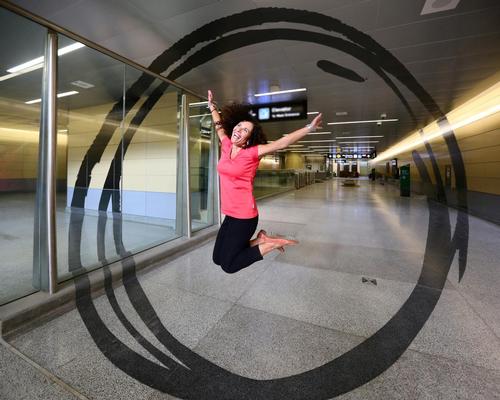
One of Canada’s leading public art consultants has told CLADglobal how the integration of art and architecture on Toronto’s expanded subway system is invigorating one of the most mundane moments of the day – the commute to and from work.
The long-awaited York Spadina 8.6km (5.3mi) subway extension, which opened in December 2017, has seen six new stations created, each incorporating a piece of permanent and playful public art.
Interactive installations include platforms adorned with LCD screens that morph as the train enters the station and shifting mosaics of daylight. Each piece, according to advisor Brad Golden – appointed to oversee the art project by the Toronto Transit Commission (TTC) – serves to forge “beautiful civic spaces that elevate the public transit experience.”
The artists, who were sourced from around the world, were brought in during the nascent stages of the station design and worked closely with the architects – including Foster + Partners, Grimshaw Architects and Will Alsop – to weave in the artwork into the structure of the station.
“Each piece engages transit riders in a discussion about public space and the importance of content or meaning in public architecture,” said Golden. “They vary in how they participate in this conversation: some ‘break the ice’ by presenting, what we consider to be typically ‘beautiful; while others, still attractive, engage the public by asking questions about larger social, cultural and political issues.
“All of the artworks are scaled to the architecture of the stations, providing an experiential relationship between civic space and the public within this space. Some of the artworks are immersive, placing the viewer in the visual or physical space of the art. Some of the artworks are live and interactive, responding to varying conditions in the station, such as a train arriving or departing or to words and phrases input by transit riders.”
Toronto has hosted a number of showcases of public art, such as its annual Winter Stations and Ice Breakers displays, and street artists such as Blue Republic and Phlegm have previously been hired by real estate developers to create bold works that facilitate placemaking across the city.
In the spotlight
Brad Golden on Toronto’s new subway station art
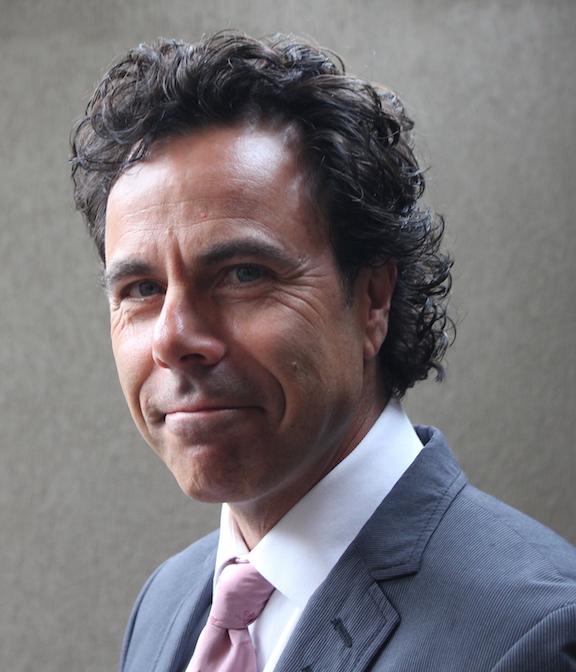
“Toronto’s new subway line extension introduces six incredible examples of artworks that are highly integrated with architecture, resulting in artworks that are spatial, experiential and interactive. The art and architecture programme is a testament to how transit design can engage citizens with a vibrant public realm that extends beyond the efficient movement of passengers.
“Ultimately, thoughtful, considered public art projects like those in this project, pay dividends for years to come. The public respects and feels ownership and agency of civic spaces that they feel were made just for them, for their commute. TTC riders have souls, and these pieces were made to move them.”
Golden explains the art and architecture of the stations
Vaughan Metropolitan Centre
Architect: Grimshaw Architects
Artist: Paul Raff Studio
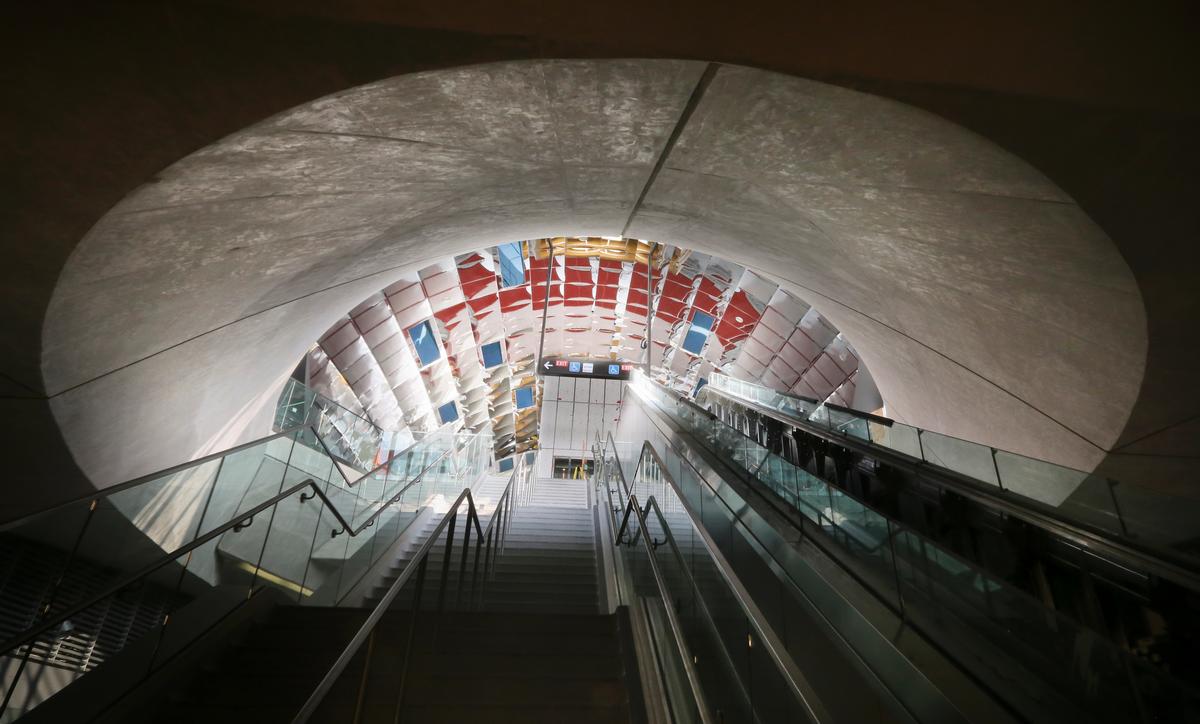
“Reflective panels and skylights capture the sun at different angles throughout the day creating an amazing, sometimes spectacular, always changing ascent, from platform to grade. Toronto designer Paul Raff worked with architect Nicholas Grimshaw to create a space that literally brightens the day of commuters.”
Highway 407
Architect: Aedas
Artist: David Pearl
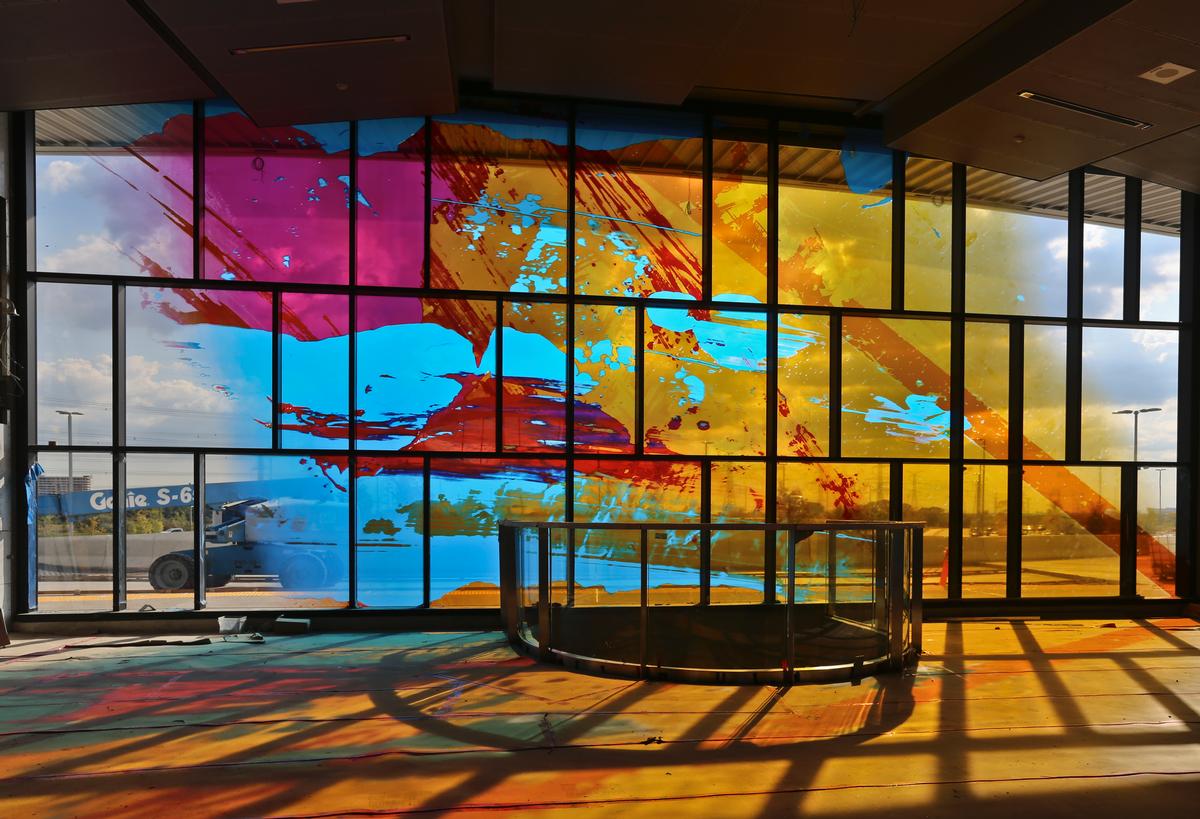
“The design of all of the stations in the TYSSE line allows for daylight to penetrate deep into the station, right down to the platform. Highway 407 station features a massive oval skylight, at the top of the escalator bank, as well as a 100ft long silkscreened window located at the integrated bus station. Both glass artworks are by Toronto artist, David Pearl. On a sunny day, the skylight and window send dynamic splashes of colour down to the subway platform and across the floor of the station, providing an evolving spectrum of colour, throughout the day in response to daily and seasonal variations in natural illumination.”
Pioneer Village
Architect: The Spadina Group Associates (TSGA), a joint venture between IBI Group, LEA Consulting Ltd. and WSP, in collaboration with British architect Will Alsop
Artist: Realities United/Jan Edler and Tim Edler
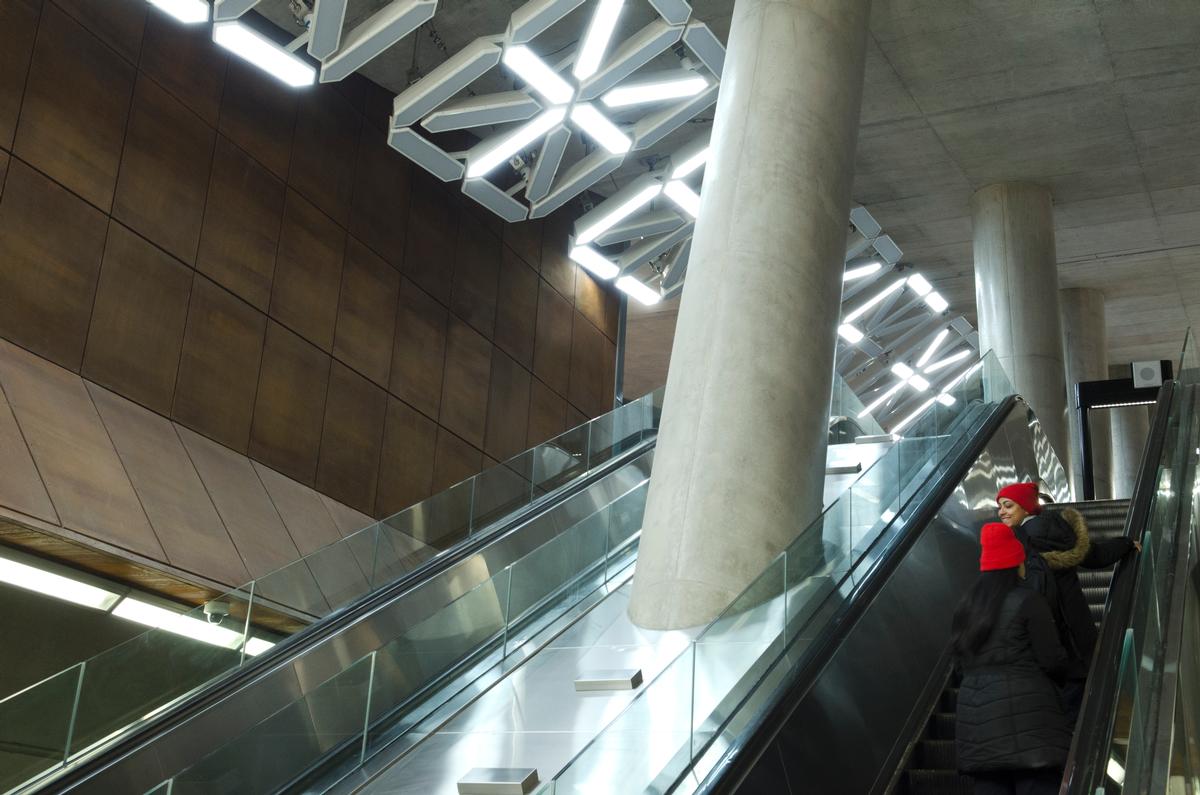
“LightSpell is a hybrid between art installation and the lighting of the subway station. The interactive installation consists of a suspended array of 40 light elements. Each element is made of 16 individually controllable luminaires and can produce all letters of the alphabet, as well as special characters and numerals from 0 to 9.”
York University
Architect: Foster + Partners
Artist: Jason Bruges Studio
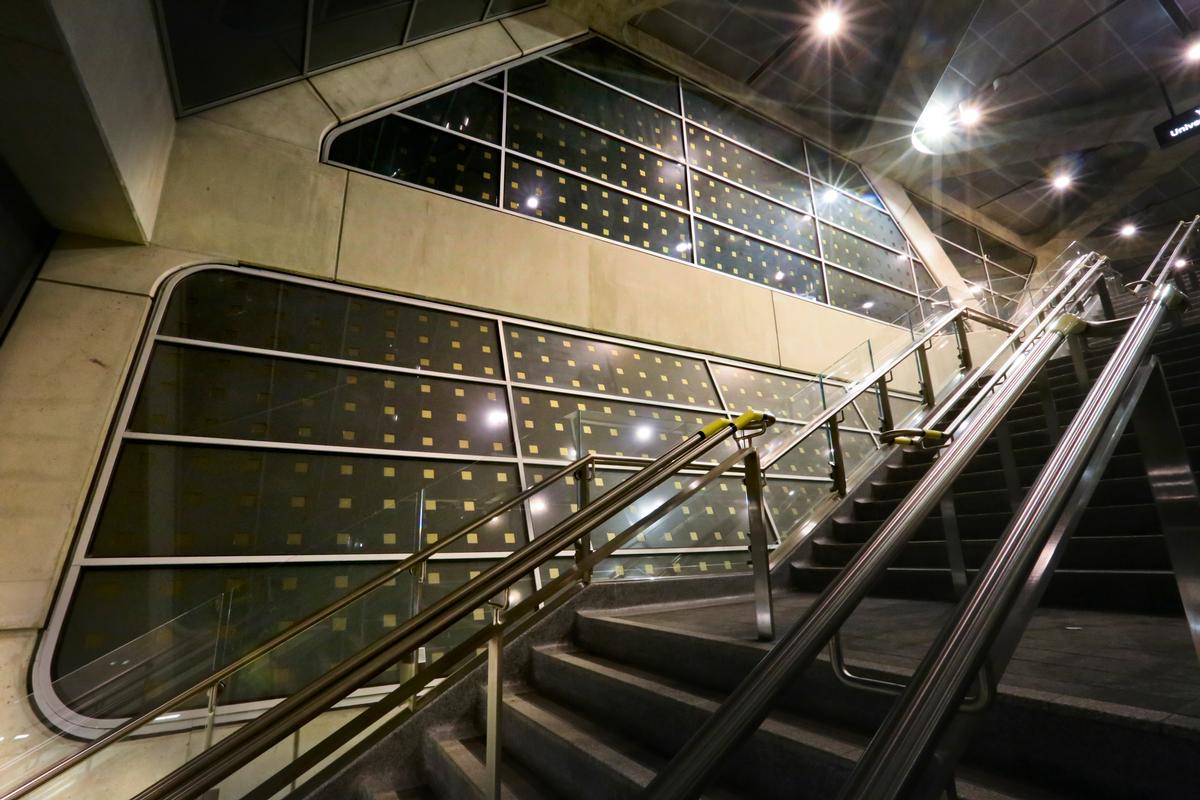
“A wall of LCDs panels, responding to the Piston Effect created as air is moved by approaching trains, is activated subtly to reflect ambient light, when a subway enters the tunnel. Designed by UK-based artist Jason Bruges, the pixellated display of air movements is a unique way for people at concourse level to know when a train is entering, present at or leaving the station, providing a unique method communication, while activating the public areas of the station.”
Finch West
Architect: The Spadina Group Associates (TSGA), a joint venture between IBI Group, LEA Consulting Ltd. and WSP, in collaboration with British architect Will Alsop
Artist: Bruce McLean
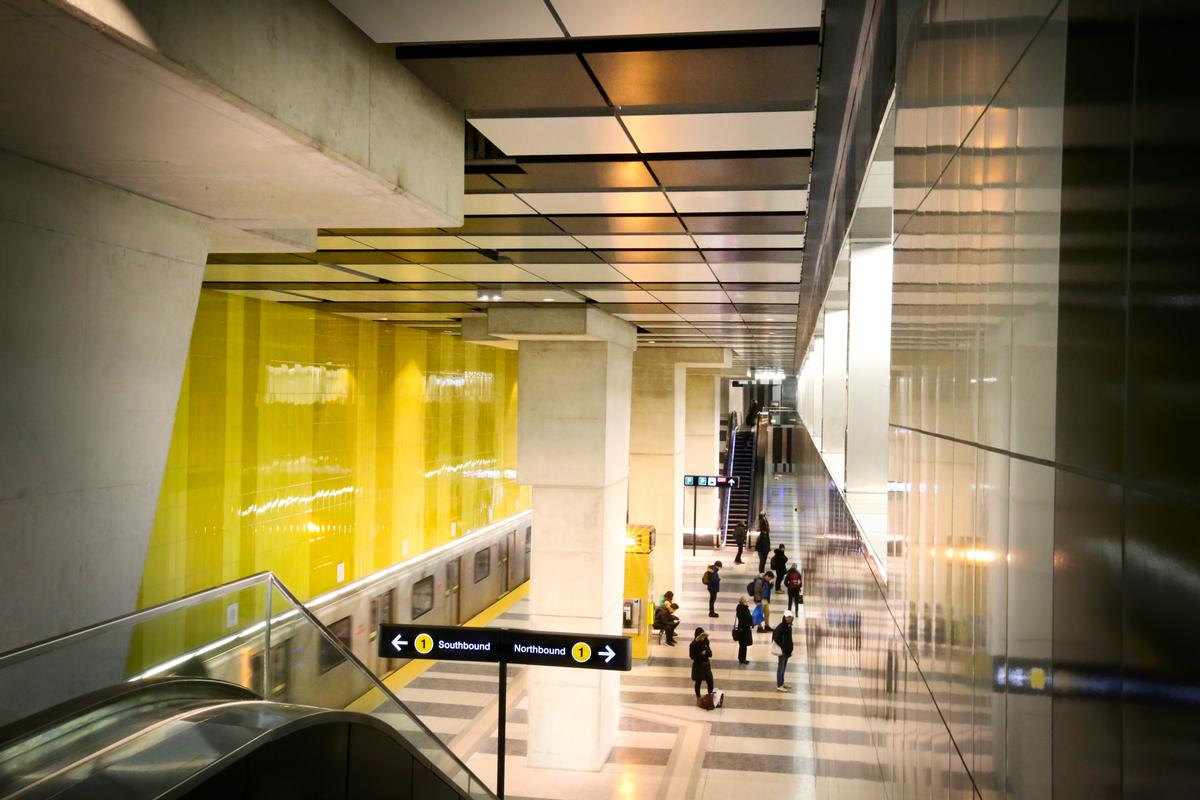
“The two buildings and combined bus platform are a true example of art as architecture and architecture as art. An eclectic mix of zebra stripes, highly chromatic tiles and finishes, combined with hot pink and green glass. UK artist Bruce McLean’s bold, colourful vision was designed to brighten the day of every single rider.”
Downsview Park
Architect: Aedas
Artist: Panya Clark Espinal
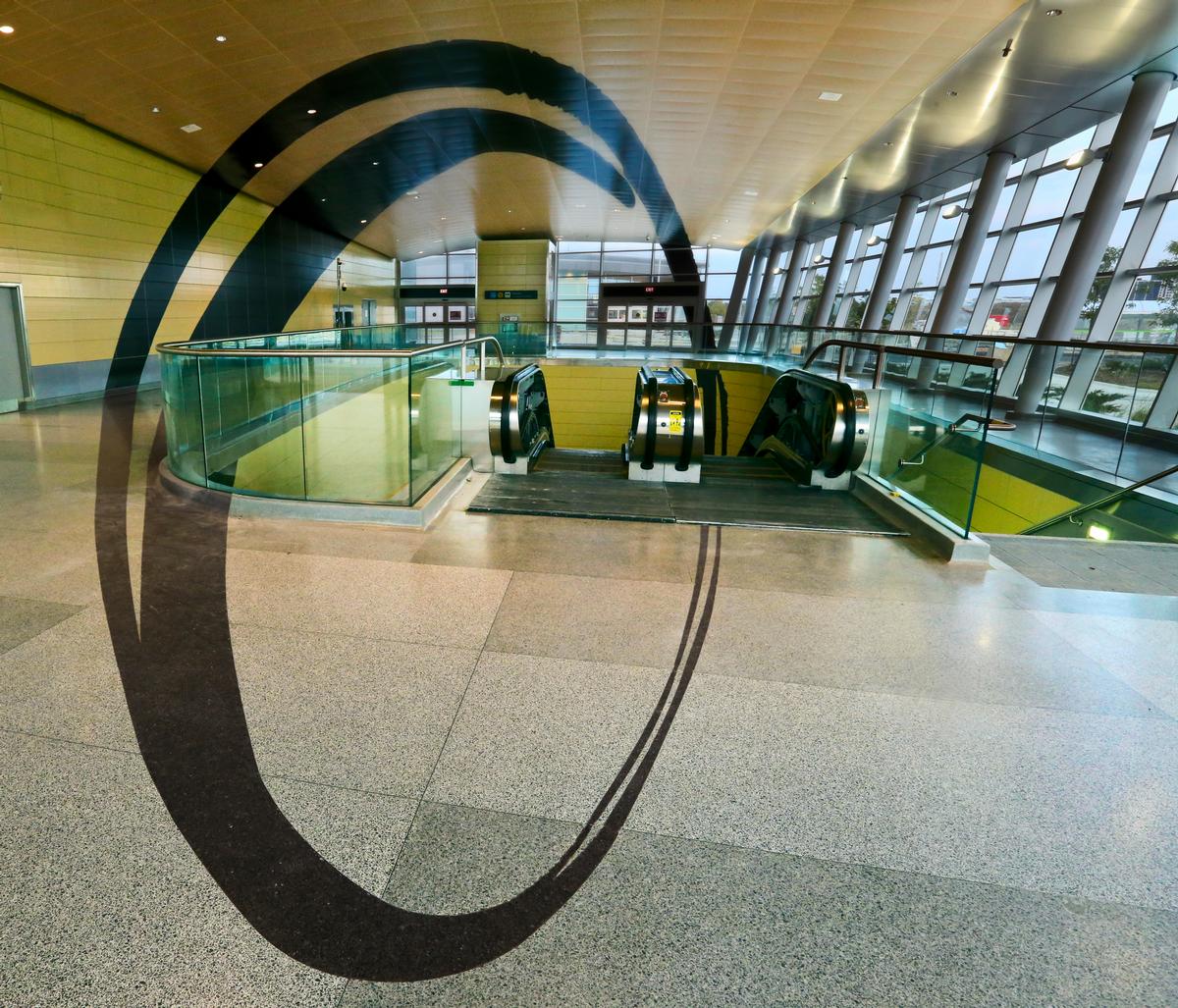
“The key to seeing Spin, by Toronto artist Panya Clark Espinal, is to find the exact spot in the station where the massive artwork can be seen in its entirety. The design, large black brushstrokes at every level from grade to platform, activate every surface of the building to create a dramatic spatial effect as the brushstrokes enter and leave the space of the building, challenging the viewer’s perception with an interactive artwork that engages human perception rather than technology.”
Close Window